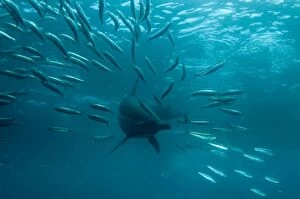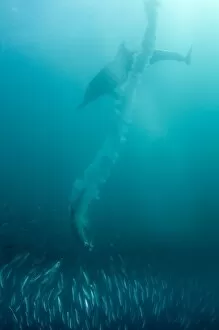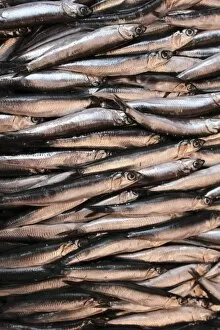Pilchard Collection (#2)
The European pilchard, scientifically known as Sardina pilchardus, is a species of small bait fish found in abundance off the coast of Cornwall
For sale as Licensed Images
Choose your image, Select your licence and Download the media
The European pilchard, scientifically known as Sardina pilchardus, is a species of small bait fish found in abundance off the coast of Cornwall, particularly in the picturesque village of Polperro. These silvery creatures play a crucial role in the marine ecosystem and have been an integral part of Cornwall's history for centuries. In the early 1900s, pilchard fishing in Cornwall was a thriving industry that employed traditional methods such as using seine nets. This technique involved casting large nets into the sea to encircle schools of pilchards and haul them onto fishing boats. Towan Head, Newquay served as a prominent location for this practice back then. One can only imagine the sight that greeted fishermen when they encountered three adult Long-beaked Common Dolphins feeding on a baitball school of small bait fish alongside their catch. The synergy between these majestic dolphins and their prey showcases nature's delicate balance. Pilchard fishing with seine nets required skill and teamwork from local fishermen who relied on their knowledge passed down through generations. It was not just about catching these oily fish but also preserving them for various purposes like food or fertilizer production. Today, while modern techniques have replaced some traditional practices, pilchards remain an important part of Cornish culture and cuisine. Whether enjoyed fresh or canned, these flavorful fish continue to be cherished by locals and visitors alike. As you stroll along Polperro's charming streets or gaze at historical photographs capturing scenes from Towan Head over a century ago, take a moment to appreciate the rich heritage associated with pilchard fishing in Cornwall. It serves as a reminder of our deep connection with nature and how it has sustained communities throughout time.








